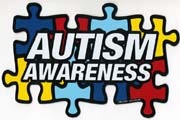March is Deaf History Month. It's about recognizing the deaf people in our community as well as looking back at the achievements of pioneers in deaf culture. Read on for the facts on sign language and how it was created.
Sign Language - History
In the 16th century, Geronimo Cardano, a physician in Padua, Italy, proclaimed that deaf people could be taught to understand symbols by matching them with the things that they represented. In 1775, Abbe (the head of an abbey) Charles Michel de L'Epee of Paris, France, founded the first free school for deaf people. He taught deaf people to develop communication with gestures, hand signs and fingerspelling (using the sign language alphabet to spell out words). L'Epee first studied the signs and gestures already used by the deaf people in Paris. This helped him make his own version of signed spoken French. He paved the way to close the gap between the hearing and the non-hearing worlds.
 Geronimo Cardano
Geronimo Cardano
In the United States, Thomas Hopkins Gallaudet, a congregational minister who became interested in helping his neighbor's young deaf daughter, went to Europe in 1815 to study methods of communicating with deaf people. While in England, the 27 year-old met with Abbe Roche Ambroise Sicard who invited him to study at his school for the deaf in Paris. After several months, Gallaudet went back to America. Along with him he brought Laurent Clerc, a deaf sign language teacher from the school in Paris. Gallaudet founded the first school for deaf people in the United States. This school was in Hartford, Connecticut and Clerc became the first deaf sign language teacher in the United States. After that, many schools for the deaf opened around the country. Twenty-two schools had been established by 1863.
 Sign Language Alphabet
Sign Language Alphabet
Sign Language - Famous Deaf People
- Ludvig van Beethoven was a German composer and pianist. He started going deaf at the age of 28 and by age 49 he could no longer hear. He continued to get worse but went on composing music. Beethoven died in 1857 when he was 57 years-old.
- Helen Keller was born on June 27, 1880 in Tuscumbia, Alabama. She was born with sight and hearing but at 19 months old, Helen fell ill and became blind and deaf. To help her learn, Helen's parents hired a teacher named Anne Sullivan. Anne taught Helen sign language and how to read Braille (special writing for blind people). Today there are many institutes around the world such as Helen Keller International dedicated to helping the deaf and the blind.
- Alexander Graham Bell, inventor of the telephone, also made it his mission to help the deaf. He wanted to help advance the communication between people who are deaf and the hearing world. Today, there is the Alexander Graham Bell Association For The Deaf and Hard Of Hearing.
 Alexander Graham Bell
Alexander Graham Bell
Sign Language - Fun Facts
- Sign language is the fourth most-used language in the US.
- Deaf History Month is observed from March 13th to April 15th every year.
- There are hundreds of sign language dialects in use around the world. Each culture has developed its own form of sign language to be compatible with the language spoken in that country.

Learning Sign Language
If you want to learn sign language, try your local community centers or your school might even offer sign language course. If not, petition your school board to introduce a course and help to bridge the gap between the hearing and the hearing impaired!

Related Stories:
- The Deal On Deafness
- The Lowdown On Heart Disease
- Attacking Asthma
- Dealing With Dyslexia
- More Cool Science and History!
































